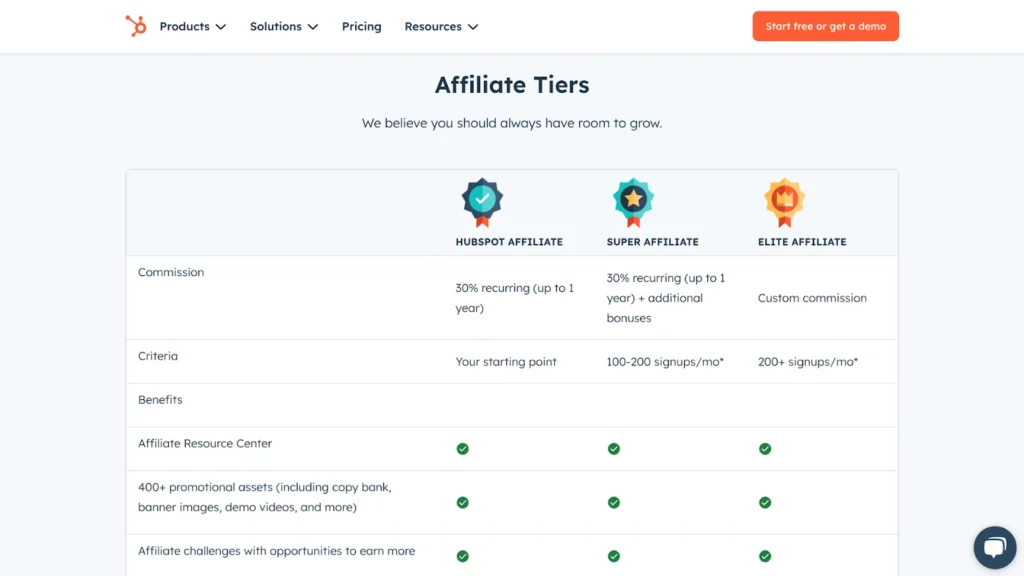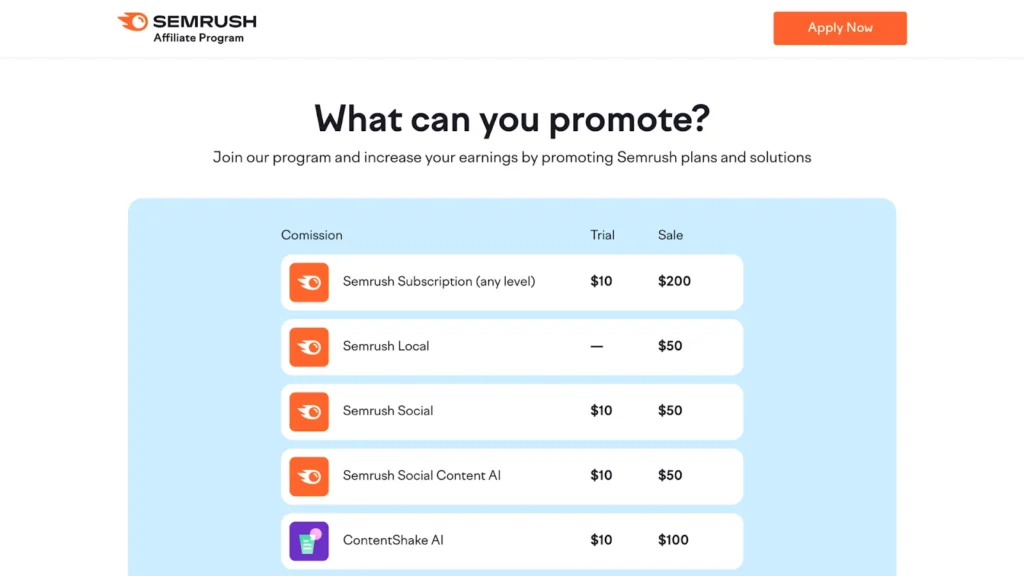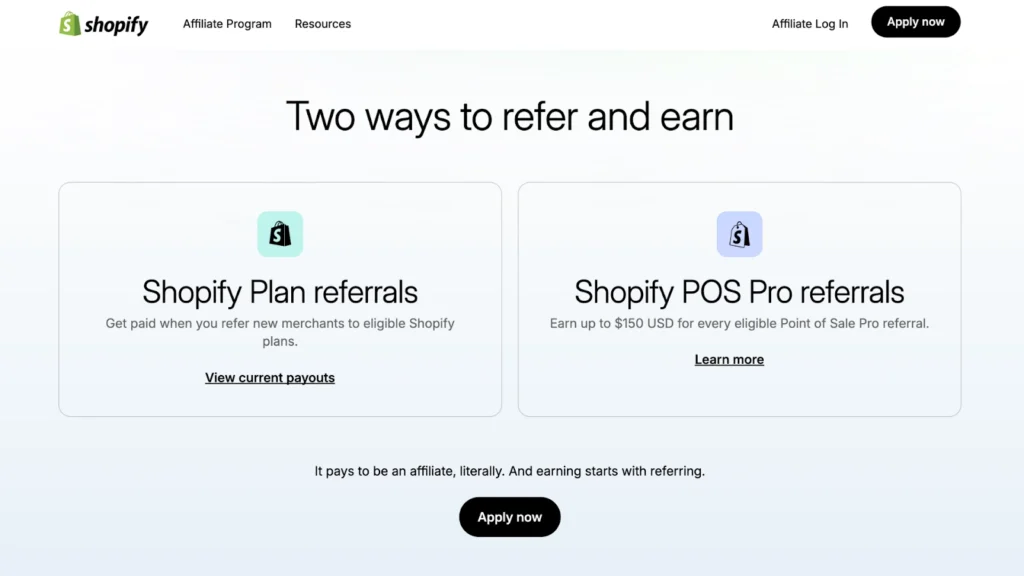Affiliate marketing has evolved from a niche digital strategy into a cornerstone of modern e-commerce. The industry’s explosive growth tells the story—from a $19.2 billion market in 2021, affiliate marketing is projected to reach $36.9 billion by 2030, expanding at a robust 7.7 percent compound annual growth rate.
However, not all affiliate programs are effective. Imagine paying every partner the same rate, whether they bring in 10 customers or 10,000. It would be limiting for your brand and demotivating to your top-performing partners.
That’s where customizable commission structures come in—offering a solution that benefits your brand and partners. These flexible payout models allow businesses to tailor affiliate compensation based on specific performance metrics, goals, or sales tiers.
Flexible commission structures make affiliates feel valued while driving better performance. Here’s what makes them so impactful:
- Rewards top performers based on their true impact.
- Tailors incentives to suit different partner types.
- Incentivizes actions that align with key KPIs.
- Builds loyalty and shows commitment to affiliates’ success.
- Optimizes costs by aligning commissions with value delivered.
Curious about how to implement these strategies effectively? Explore how different customizable commission structures can transform your partnership program into a results-driven powerhouse.
Key takeaways from this blog
- Customizable commission structures boost affiliate motivation by aligning rewards with business goals and measurable performance outcomes.
- Tiered commissions encourage higher performance and reward consistent growth with clear, scalable incentives.
- Performance-based models ensure payouts for qualified results, aligning affiliate efforts with key objectives like sales or conversions.
- Time-limited commissions create urgency, maximizing affiliate engagement during seasonal or promotional campaigns.
- Product-specific commissions focus affiliate efforts on high-priority or high-margin products, driving strategic business outcomes.
- Hybrid models combine elements of different structures, offering flexible solutions to meet diverse affiliate and business needs.
What are the 5 main types of customizable commission structures?
Five effective flexible commission models—tiered, performance-based, time-limited, product-specific, and hybrid commissions—can drive affiliate motivation and align with your business goals.
Discover each structure’s distinct advantages, key considerations for success, and the best use cases to maximize these strategies. Whether you’re aiming to boost high-margin product sales or increase seasonal engagement, use these insights to create a tailored, results-focused commission plan.
Before you dig into the details, here is a quick breakdown of the different commission structures:
| Commission Structure | Best For | Pros | Cons |
| Tiered | • Large affiliate programs • Programs with diverse partner types • Brands focusing on growth | • Motivates performance • Clear progression path • Rewards loyalty | • Complex to manage • Higher admin overhead • May discourage new affiliates |
| Performance-based | • Results-driven programs • B2B companies • Lead generation | • Direct ROI tracking • Pay for results only • Easy to justify | • May deter risk-averse affiliates • Complex tracking needed • Higher upfront costs |
| Time-limited | • Seasonal businesses • Product launches • Special promotions | • Creates urgency • Easy to budget • High engagement | • Short-term focus • May cause burnout • Requires constant refresh |
| Product-specific | • Multi-product companies • Inventory management • High-margin products | • Targeted promotion • Inventory control • Margin optimization | • Product knowledge required • Complex tracking • Regular updates needed |
| Hybrid | • Enterprise programs • Complex product lines • Multiple affiliate types | • Maximum flexibility • Customizable incentives • Suits all affiliate types | • Most complex to manage • Highest admin overhead • Requires sophisticated tracking |
1. Tiered commission structures incentivize higher performance
Tiered commission structures reward affiliates with higher commission rates as their performance improves.

Image description: HubSpot splits its affiliate program into three tiers—HubSpot, Super, and Elite affiliate—each with its unique rewards.
Advantages:
- Encourages affiliates to scale their efforts to reach higher tiers.
- Offers a clear incentive for consistent growth.
- Attracts experienced affiliates motivated by performance-based rewards.
Key considerations:
- Define clear thresholds to avoid confusion.
- Verify higher commission rates align with your profit margins.
- Regularly review performance to promote fairness.
Best use:
- Encouraging affiliates to focus on long-term sales growth.
- Driving performance during critical business periods, like product launches or holiday sales.
2. Performance-based commissions reward results
Performance-based commissions pay affiliates based on measurable contributions, such as leads, sales, or conversions, instead of activity volume.

Image description: Semrush offers varying rates for every first purchase and trial made by affiliates.
Advantages:
- Guarantees you only pay for qualified results.
- Aligns affiliate efforts with business objectives.
- Provides affiliates with varied earning opportunities based on their strengths.
Key consideration:
- Define conversion metrics clearly, such as a sale or lead qualification.
- Establish transparent tracking mechanisms.
- Offer realistic but motivating compensation levels.
Best use:
- Driving high-quality leads and sales for specific campaigns.
- Building partnerships with affiliates aligned to your business goals.
3. Time-limited commissions create urgency
Time-limited commissions offer higher rewards for affiliate sales or referrals completed within a certain time frame.

Image description: MammaBump affiliates receive increased commissions for seasonal promotions.
Advantages:
- Creates urgency and short-term focus among affiliates.
- Works well with seasonal or promotional campaigns.
- Encourages faster action and engagement from affiliates.
Key considerations:
- Set clear timelines and communicate them upfront.
- Monitor affiliate behavior to identify unethical practices.
- Evaluate campaign outcomes to assess profitability.
Best use:
- Seasonal promotions or product launches.
- Boosting affiliate activity during stagnant sales periods.
4. Product-specific commissions focus on affiliate efforts
This model assigns higher commission rates to select products or services you wish to promote more aggressively.

Image description: Shopify provides a higher commission for Point of Sale Pro referrals.
Advantages:
- Allows for strategic promotion of key products or inventory.
- Focuses affiliate efforts on high-margin or underperforming items.
- Provides affiliates with opportunities to diversify their promotional focus.
Key consideration:
- Choose products strategically to achieve business goals.
- Regularly assess product-specific performance.
- Communicate value propositions clearly to affiliates.
Best use:
- Shifting attention to new or high-priority products.
- Targeting inventory with high potential but low visibility.
5. Hybrid commission models combine strategies for flexibility
The hybrid commission model combines two or more commission structures, such as a base performance rate with a tiered bonus or event-based rewards.

Image description: Acorns affiliates earn a $5 referral bonus for every friend and bigger bonus investments through their Limited-Time Promo Referral Bonuses.
Advantages:
- Offers flexibility to meet diverse affiliate incentives.
- Aligns with both short-term and long-term business goals.
- Attracts a wider pool of affiliates with different motivations.
Key consideration:
- Keep the model remains transparent and easy to manage.
- Avoid setting overly complex rules that confuse affiliates.
- Continuously review performance to optimize effectiveness.
Best use:
- Scaling partnerships while retaining a focus on high-priority metrics.
- Balancing rewards to motivate both new and seasoned affiliates.
4 Factors to consider when choosing the right commission structure
1. Alignment with business goals
Your commission structure should align with your organization’s key objectives, whether it’s boosting sales, increasing brand awareness, or promoting specific products, ensuring your affiliate strategy adds measurable value.
2. Cost-effectiveness
Balancing competitive payouts with profit margins is crucial; overpaying harms profits, while underpaying deters affiliates. Choose structures that optimize costs by linking commissions to performance and outcomes, guaranteeing you pay for actual value delivered.
3. Simplicity and transparency
Clear and easy-to-understand commission terms build trust with your affiliates. When payment structures become overly complex or opaque, affiliates may lose confidence in your program. Define thresholds, metrics, and rules explicitly to eliminate confusion and provide smooth implementation.
4. Adaptability to market changes
Market conditions and business priorities can shift, so your commission structure should be flexible enough to accommodate change. A model that allows adjustments—for instance, temporary rates for seasonal campaigns or new product launches—helps you capitalize on emerging opportunities without overhauling your program.
FAQ
Customizable commission structures allow you to tailor how affiliates are rewarded based on factors like performance, product focus, or campaign goals. They’re important because they align incentives with your business objectives, keep affiliates motivated, and adapt to changing market needs.
- Tiered commissions: Rewards increase as affiliates reach specific performance milestones, motivating sustained growth.
- Performance-based commissions: Affiliates earn payments based on measurable results like leads or sales, ensuring alignment with business objectives.
- Time-limited commissions: Higher payouts are offered for actions taken within a set timeframe, driving urgency and engagement during campaigns.
- Product-specific commissions: Affiliates receive higher rewards for promoting selected products to focus efforts on priority or high-margin items.
- Hybrid models: Combines different commission structures, offering flexibility to cater to diverse affiliate needs and business goals.
Key factors include
- Aligning with business goals to ensure measurable value
- Maintaining cost-effectiveness by balancing payouts with profits
- Ensuring simplicity and transparency to build trust
- Adapting to market changes for flexibility in dynamic conditions.
Turn affiliate loyalty into growth with custom commission plans
Customizable commission structures are changing the way businesses manage affiliate partnerships. By fostering innovation and adaptability, these models enable brands to pivot strategies quickly, respond to market shifts, and stand out in a crowded field.
Beyond enhancing motivation and loyalty, they empower affiliates to align their efforts with evolving business objectives, creating a dynamic ecosystem where both parties thrive.
To advance your strategy, leverage platforms like impact.com. With tools like Dynamic Payouts, you can optimize commissions precisely to reward partners fairly while strengthening long-term relationships.
Invest in scalable, transparent partnership management today to achieve stronger outcomes for both your business and your affiliates.
Want to know more about affiliate marketing? Check out these impact.com resources:
- Ultimate guide to affiliate marketing [ebook]
- How to develop an affiliate commission strategy for your brand [blog]
- How an affiliate program works—from first click to payout [ebook]
- 10 best practices for a perfect affiliate partnership flight [infographic]
- Best practices: Discover and Recruit [ebook]
- Best practices: Contract and Pay [ebook]




